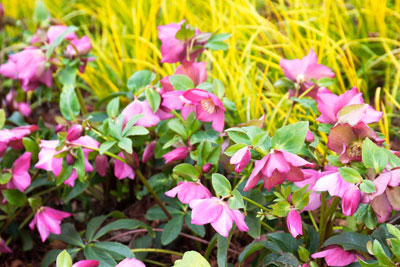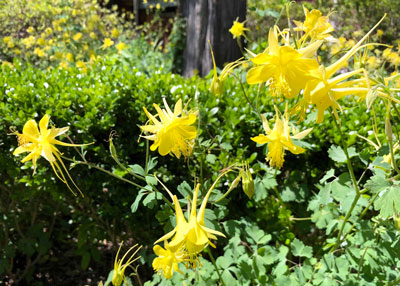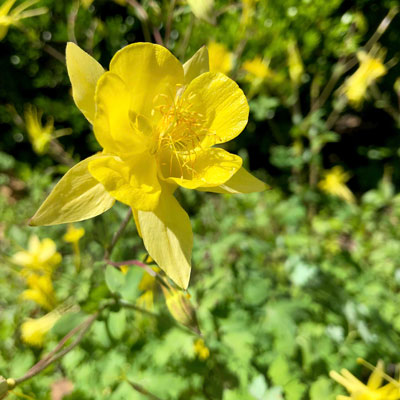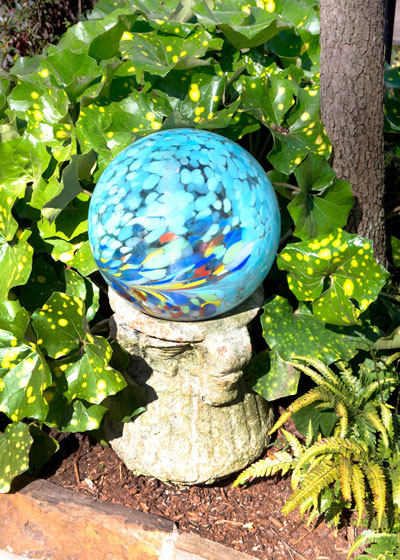Fun Plants for the Shade
If our trees grow as they’re supposed to, before long we’re all left with beds smothered in shade. Most of those flowers that used to thrive in our sun are struggling to stay alive, let alone bloom.
So, what’s a gardener to do? What plants will prosper when shade abounds ‘round every corner? Here are four that have done well for me and for thousands of other Texas plant lovers. But they’re still not grown widely enough. You ought to include them as well.

Hellebores. These are commonly known as Lenten roses because they bloom during that season. Dozens of new hybrids have come into the market. Look for more vivid colors and more upright-facing flowers. There’s a lot going on in their world. Nurseries sell out about as fast as they arrive.
Hellebores form clumps in your garden. Their blooming heights will vary, depending on the selections you grow, but they’ll usually be in the range of 15 or 18 inches tall. I plant mine about 16 inches apart, but that could vary depending on the variety.
Choose a site where they can remain undisturbed for many years, and prepare their soil carefully prior to planting.

Solomon’s seal. (Polygonatum odoratum cv.) I love this plant. It has fascinating flowers, but we grow it for its foliage primarily. There are many cultivars in the nursery trade now, most with some degree of white variegation.
I’ve had my planting for six years, and each year they grow to be about 18 inches tall. They hold their good looks all through the summer and well into fall. And speaking of tolerance of shady conditions, one of my plants has decided to send sprouts up within one of those two antique English chimney pots I have in our landscape. Those shoots do just as well as the ones outside in the real world.

This is a plant you’re going to have to be lucky to find. Nurseries sell out as soon as supplies arrive. Your best chance will be to check with local independent retail garden centers, but if you strike out there, several nice types are available online from nurseries that specialize in unusual perennials. I got several fun types from Plant Delights Nursery in Raleigh, NC.

‘Texas Gold’ columbine. This is a selection from a native species from an unusual West Texas mountainous site where moisture abounds. Seed was collected by highly respected plant man Greg Grant, now Smith County Extension horticulturist. It performed so well under extensive testing by Texas A&M horticulturists that it gained the distinction of being named a Texas Superstar® plant more than 20 years ago. It’s been dubbed the “Queen of the shade” when it comes to flowering plants for the Lone Star State.

‘Texas Gold’ plants grow to be 24 to 30 inches tall when in bloom. Their blue-green leaves are graceful and lovely on their own. The mother plants are short-lived perennials (2 or 3 years), but the plants reseed freely following flowering, so you have a ready source of new seedlings for the following year.

Leopard plant. Once in the genus Ligularia, this plant is now classified as Falfurgium japonicum cv.
Although it produces showy yellow blooms over the winter, most of us grow it for its foliage. Large-leafed green types are sold, but many of us like the brightly spotted type that gives the plant its common name.
To those not familiar with this plant it might look like some type of fancy-leafed begonia, but out in the garden you soon find that it’s a ridiculously durable perennial. Give it that good soil and ample moisture, and it will dazzle your plantings for years.
